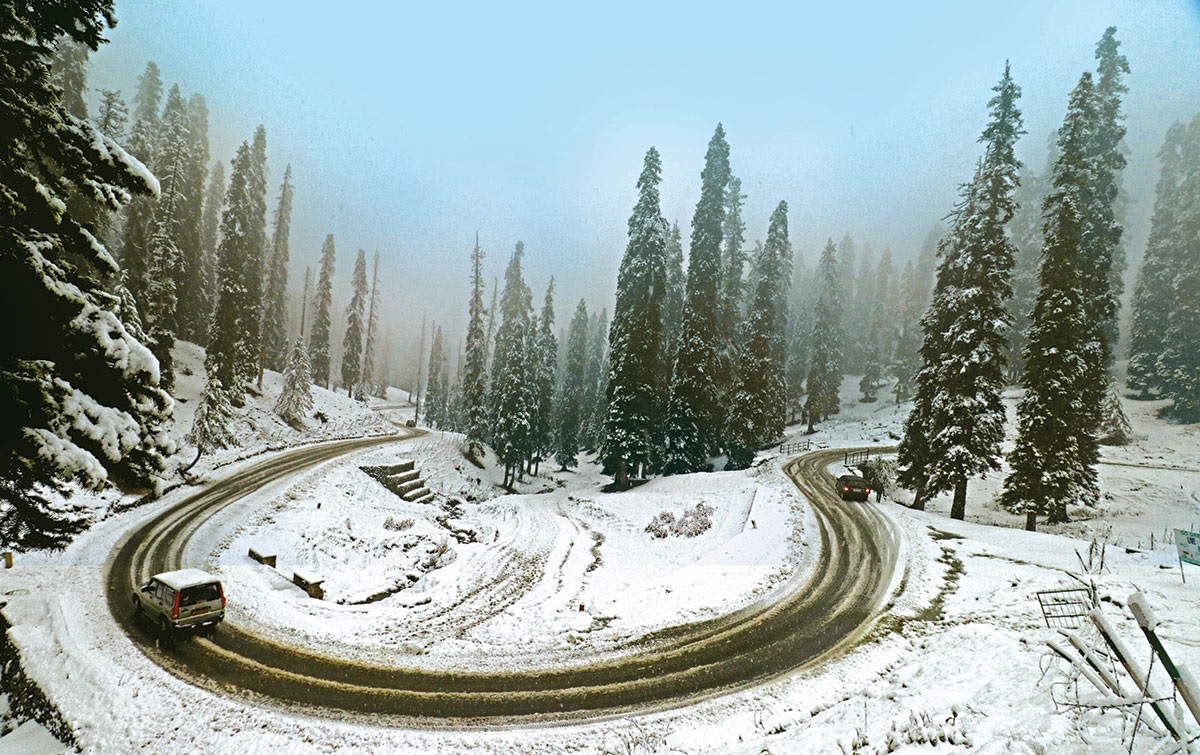Having its charm of untamed, raw beauty, Doodpathri, a 2-hour drive from Srinagar, has pristine surroundings that create a sense of wilderness, adventure and exploration, reports Hurmat Altaf
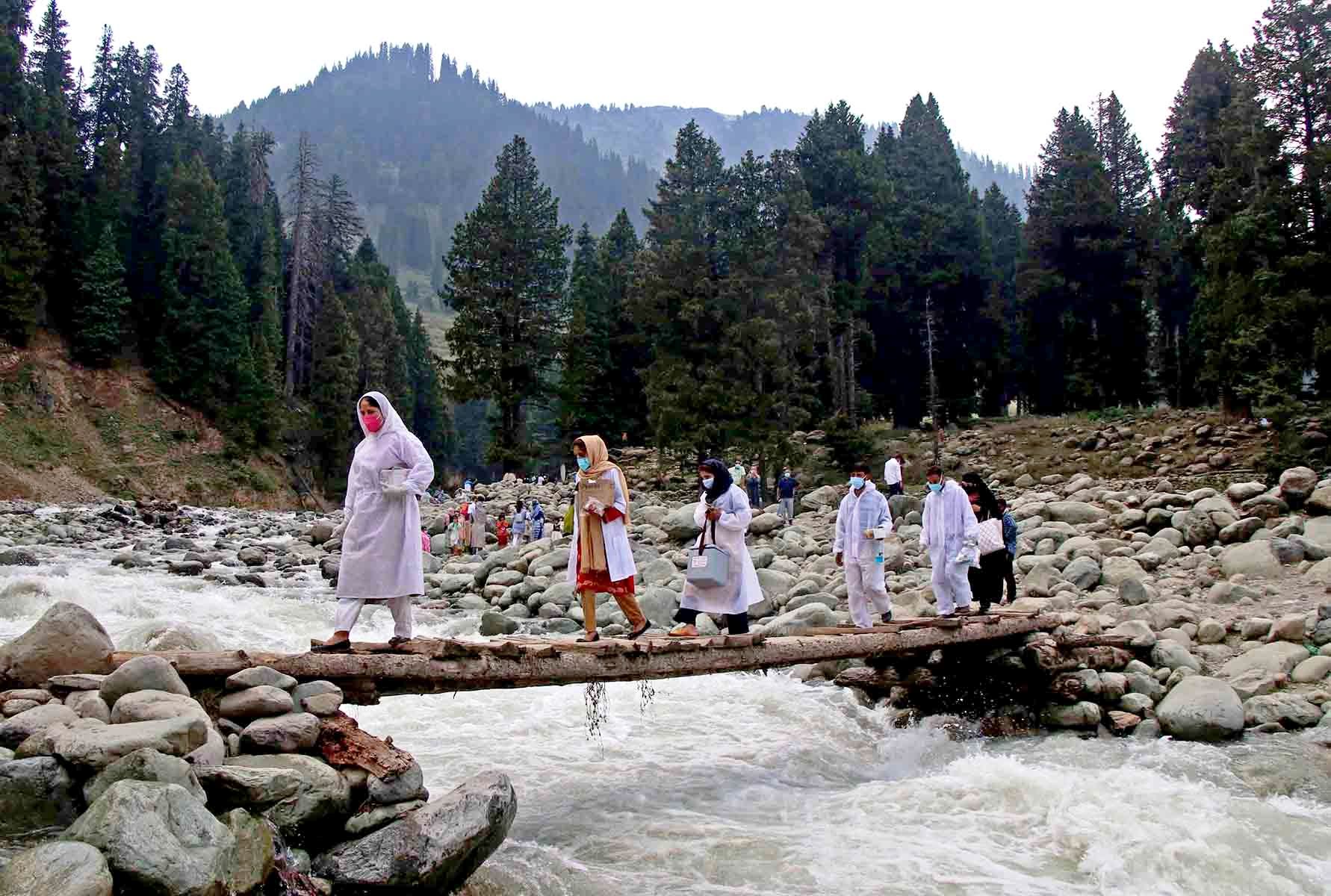
Doodhpathri is an evolving tourist destination in central Kashmir’s Budgam district. Off late, it is crowded during the day. Situated at an altitude of 8957 feet, it is approximately 42 km from Srinagar.
The name Doodhpathri means Valley of Milk in Kashmiri. Folklore suggests that Kashmir’s revered saint and preacher, Sheikh Noor-ud-Din Noorani (Nund Rishi) once struck his stick on the ground while looking for water to pray, and milk flowed out instead. This milk later turned into water that began flowing across the meadows, giving the area its name. The water in Doodhpathri still has a milky white appearance when viewed from a distance.
The more plausible explanation is that the region has always remained rich in milk production.
The landscape of Doodhpathri consists of vast grassy slopes dotted with colourful wildflowers. It falls in the Pir Panjal range of the Himalayas and is surrounded by snow-clad mountains. The meadows are covered with pine and deodar forests. During winters, the entire area is blanketed under snow. In spring and summer, wildflowers like daisies and buttercups bloom across the meadows.
No Settlements
Doodhpathri does not have any permanent settlements. During summers, shepherds from Budgam bring their cattle to graze in Doodhpathri and stay there temporarily for around six months. In winter, the area becomes inaccessible due to heavy snowfall.
Off late, however, the authorities make efforts to keep it accessible during the winters. Policymakers are exploring the possibility of making this a ski resort. Setting up a ski-hiring facility has also boosted winter tourism, enabling tourists to access skiing equipment at a low cost. Locals have welcomed the government’s efforts to develop Doodhpathri as a tourist spot, hoping it will boost employment in the region.
In order to attract tourists towards the spot, festivals and media campaigns are routine activities. Even civil society groups have started contributing to the effort. They use social media.
The drive from Srinagar to Doodhpathri offers scenic views of valleys, waterfalls, orchards and meadows. It takes around two hours to reach by road. Popular stopovers on the way include Tangnar, Mujpathri and Palmaidan.
Tangnar is a gorge lined with pear trees and pine-deodar forests set against rolling hills. Located just two km before Doodhpathri, it provides a peaceful pitstop to enjoy nature’s beauty.
Mujpathri – the Valley of Turnips, is a small village three km from Doodhpathri. The tranquil sounds of the Shaliganga river flowing through Mujpathri add to its charm.
Palmaidan, meaning “big boulder ground”, has huge ancient rocks and a stream passing through it. During summers, shepherds camp here with their herds.
Other attractions near Doodhpathri are the meadows of Dikshal that offer views of Ashtaar glacier and Yusmarg with its lush green pastures. The Shaliganga and Doodhganga rivers impart a milky hue to the waters, thus lending the name “Valley of Milk” to Doodhpathri.
When To Visit
Depending on personal preferences, the ideal time to visit ranges from December-January for snowfall or April-July to see blooming flowers across the meadows.
Doodhpathri has limited accommodation options. During summers tented accommodation is available. Staying in Srinagar, just 2 hours away, is an alternative for tourists. Since settlements in Doodhpathri are scarce, travellers are advised to carry their food and water. The weather can be unpredictable, so proper warm clothing is recommended. For those short on time, a day trip to see the main sights is suggested.
Most of the tourists spend part of the day on the banks of the roaring rivulet.
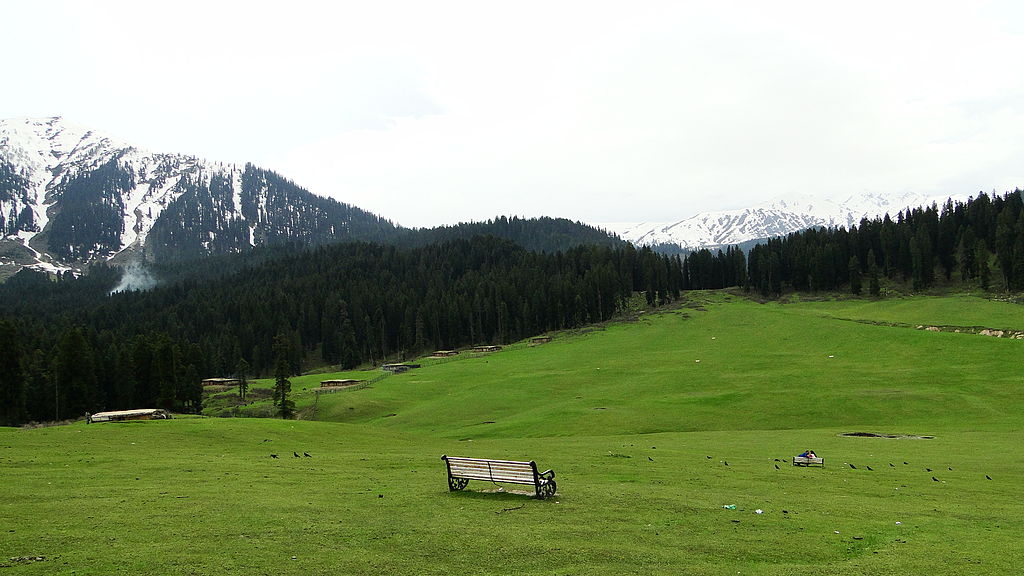
Doodhpathri is one of the three tourist spots located adjacent to each other – the Yousmarg and the Tosa Maidan.
In comparison to other valleys, Doodhpathri offers a peaceful experience focused on nature’s beauty rather than adventure sports. In contrast, Gulmarg is known for winter sports, Sonmarg attracts skiing enthusiasts, and Pahalgam has an enclosed, valley-like feel between mountains.
The natural landscapes of Doodhpathri with its meadows, pine forests, streams, and snow-clad mountains hold immense tourism potential. However, basic facilities need to be upgraded to attract more visitors. The local administration and tourism department have been striving to highlight the area’s beauty and promote it sustainably.
Doodhpathri stands out for its pristine natural charm, unique folklore, rich biodiversity, cultural heritage, and scope for adventure. The valley bursts into colourful bloom during spring and summer as flowers like wild roses, lavender and orchids infuse the air with fragrance. One can explore the lightly marked trekking trails, go horse riding towards waterfalls hidden in the mountains, and picnic in the vast meadows.
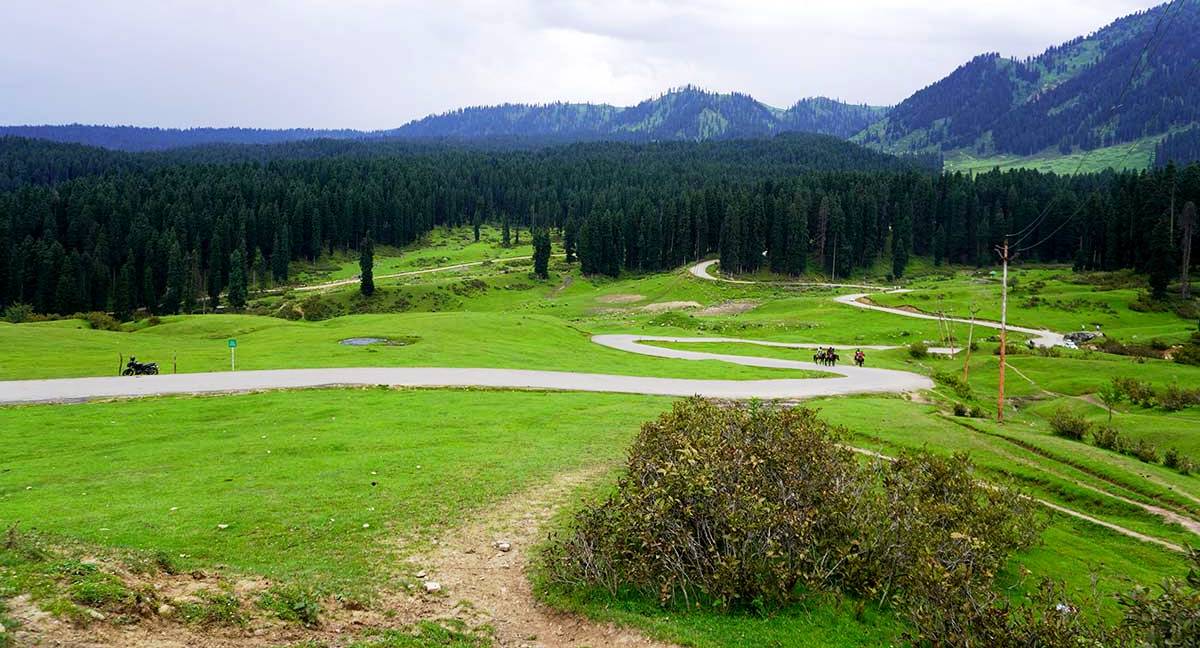
The valley is also home to many Himalayan bird species like the Himalayan Monal, Golden Oriole and Kashmir Flycatcher. Remnants of ancient Hindu temples like the Naga Mandir dedicated to Lord Shiva reflect the history of the region. According to legends, the milky white appearance of the Shaliganga river waters lent Doodhpathri its name and the waters are believed to have miraculous healing properties.
When covered under a blanket of pristine white snow during wintertime, Doodhpathri transforms into a snowy paradise for activities like skiing, snowboarding and snowman-building. Overall, Doodhpathri offers scenic natural beauty, rich biodiversity, cultural heritage and adventures to suit diverse tourist interests throughout the year.
Conscious efforts are being made to develop the area while preserving its ecological balance. Travellers are encouraged to practice responsible tourism and respect local biodiversity and culture. With its untarnished landscapes waiting to be explored, Doodhpathri stands out as a hidden gem tucked away in the paradise of Kashmir.
This is perhaps the only tourist spot where the visitors have access to the hospitality of the residents who sell Kashmir Nun Chai –the slat tea, on roads with butter-laced maize breads. Once inside the vast green stretch, one can actually oversee how the pastorals and the nomads grazing their herds live in hutments and what they eat. Some of them are selling tea and other items from their hutments.

The journey to Doodhpathri offers glimpses into the rich cultural heritage and biodiversity of Kashmir. While driving from Srinagar, travellers can see rolling pastures with cattle grazing, shepherds navigating dirt tracks, and little rivulets crossing through farms. The simplicity of rural life comes alive through many small villages en route dotted with charming mud houses known as koshas.
The ethereal beauty of Doodhpathri is magnified manifold during the early hours of the day. Watching the first rays of sunshine fall upon the snow-capped peaks as mist floats through the valley is truly a breath-taking sight. Silence engulfs the meadows, broken occasionally by birdsong. The cool morning breeze, the scent of pine forests, and the crunching sound of boots over fresh snow make it a deeply rejuvenating experience.
While Gulmarg, Pahalgam and Sonmarg are more widely visited places, Doodhpathri has retained an aura of untouched purity and serenity. For those seeking quietude amid nature, Doodhpathri offers immersive relaxation far away from crowds. Spending a few days here provides a perfect antidote to the frenzy of urban life.
The local community is actively involved in preservation efforts for Doodhpathri’s unique ecology. Voluntary groups educate visitors about responsible tourism. Waste management initiatives have been started in the region. Such endeavours must be encouraged by tourists through cooperation and community participation.
An exciting way to discover Doodhpathri’s hidden treasures is by wandering along its many walking trails. One can uncover gurgling streams, waterfalls tucked away in valleys, weeping willows, and clearings carpeted with wildflowers. Maps and guided tours are available for navigating the unmarked trails.
Doodhpathri transforms into a winter wonderland during snowfall. Imaginative travellers can craft igloos, mini snow castles, snowmen, and sculptures from the abundance of snow. Sipping piping hot kahwah while appreciating these snow creations makes for fond memories.
The chance to learn about local legends, folk stories, poetry, music and crafts from indigenous communities adds depth to the experience of visiting Doodhpathri. Interacting with local inhabitants provides insights into regional culture and heritage. Trading stories while sitting around a bonfire is a great way to hear interesting tales.
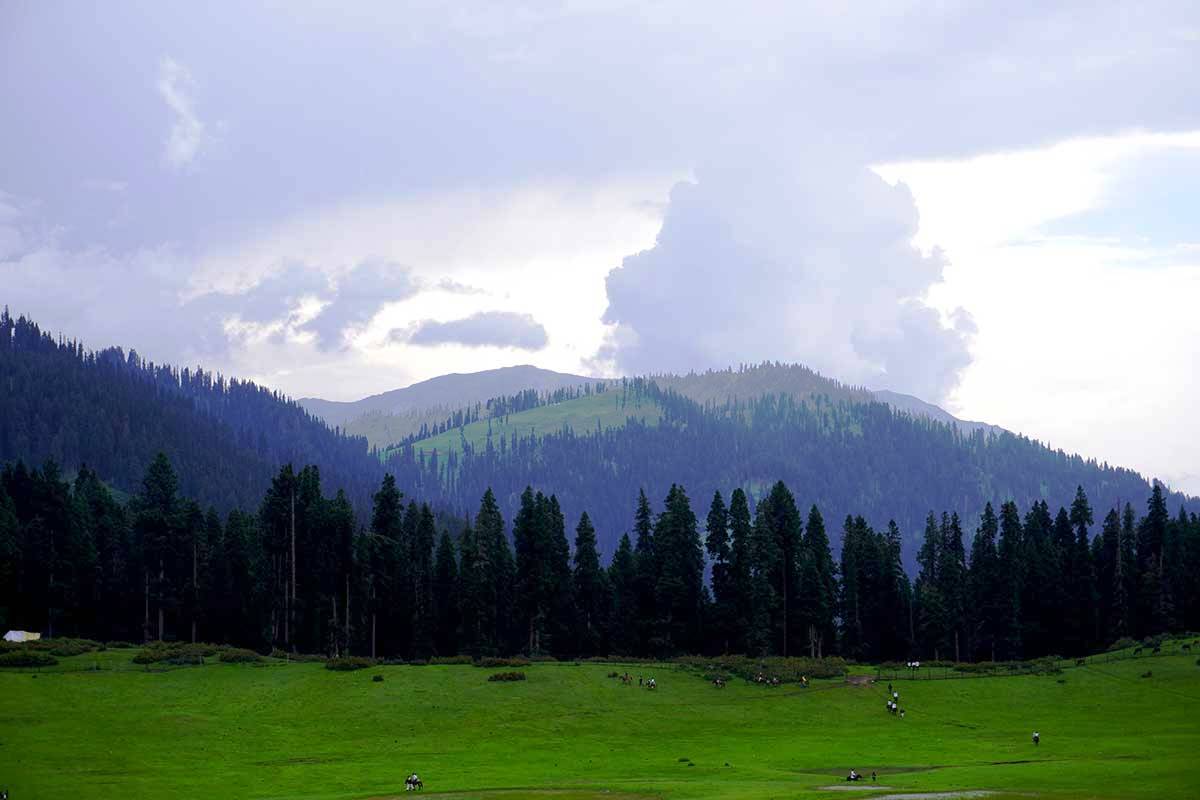
While Gulmarg is renowned for winter sports like skiing, Doodhpathri has its charm of untamed, raw beauty. The pristine surroundings create a sense of wilderness, adventure and exploration waiting to be unearthed. For some travellers, Doodhpathri’s secluded intimacy surpasses heavily frequented tourist spots.
The night sky in Doodhpathri is a stargazer’s paradise. The lack of light pollution coupled with the high altitude allows breathtaking views of sparkling constellations, galaxies, shooting stars and even the Milky Way at times. For inquisitive minds, local astronomers provide night sky tours.

Doodhpathri has represented Kashmir’s quintessential beauty through its meadows, streams, temples and legends for centuries. This symbiotic relationship between nature and culture is an invaluable part of the region’s identity. As more travellers discover Doodhpathri’s allure, it continues to reflect Kashmir’s timeless ethos.
The land where milk once flowed has blossomed into a valley that sustains life, heritage and experiences. The story of Doodhpathri is one of untapped possibilities, from its mythic origins to its budding future. For discerning travellers seeking authentic vistas and experiences, Doodhpathri awaits to be discovered off the beaten path.





